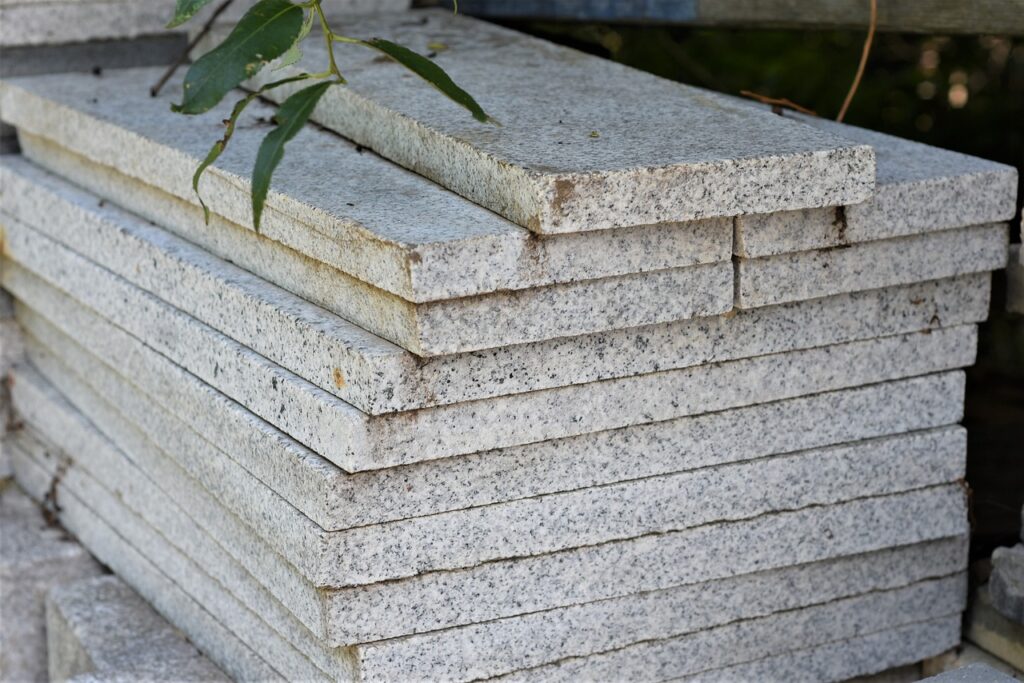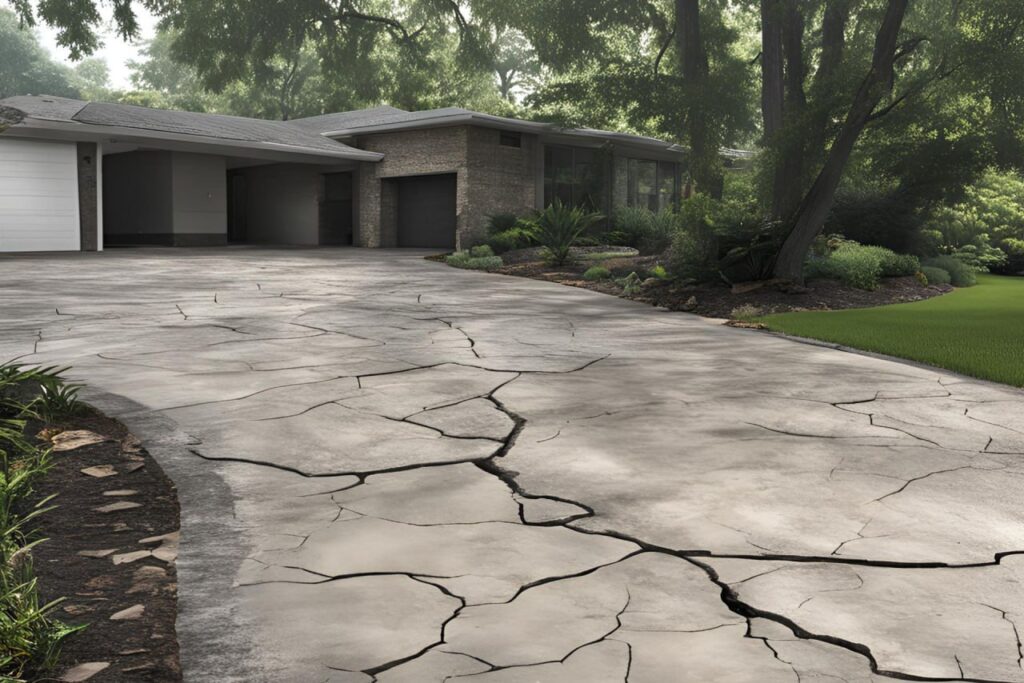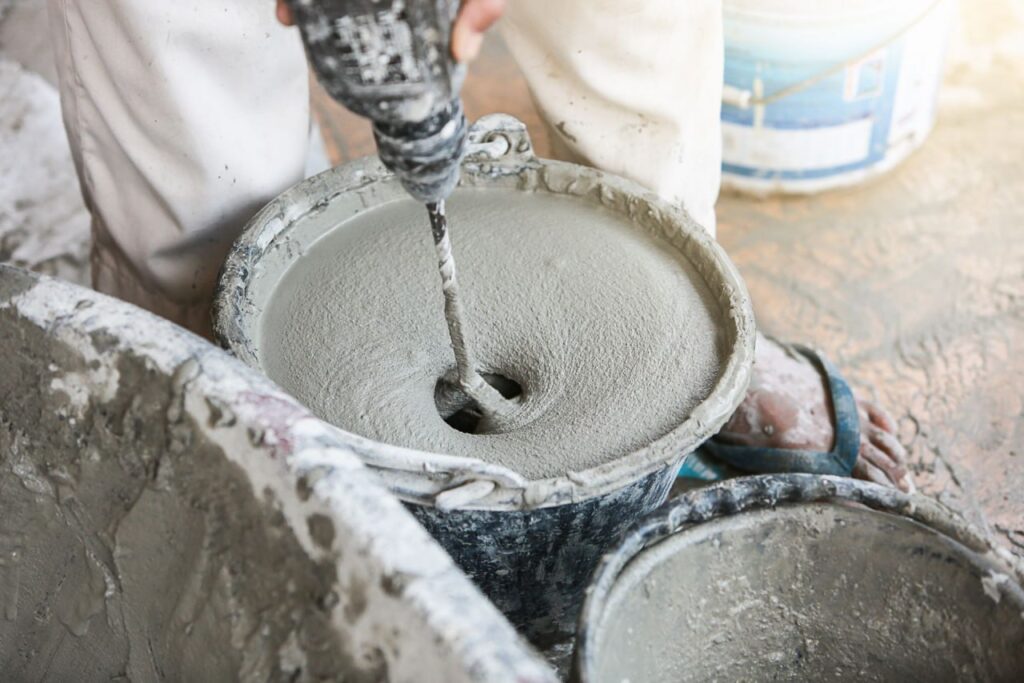Welcome to our comprehensive guide on concrete driveway joints! If you’re considering installing a concrete driveway or already have one, you might be wondering about the necessity and importance of joints. Understanding why these seemingly simple features are crucial can save you from potential headaches and costly repairs down the line. In this post, we’ll delve into what concrete joints are, their different types, and why they play a vital role in maintaining the longevity and integrity of your driveway. By the end of this guide, you’ll have a clear understanding of how to ensure your concrete driveway stands the test of time, weather, and daily wear and tear.
Concrete driveway joints are essential for preventing cracks and extending the lifespan of your driveway. They accommodate the natural expansion and contraction of concrete due to temperature changes. Common types include expansion joints, contraction joints, and construction joints, each serving to manage stress and minimize damage. Properly installed joints ensure a durable, low-maintenance concrete driveway, making them a crucial consideration for any installation.
- Understanding Concrete Driveways
- What Are Concrete Joints
- Types Of Concrete Joints In Detail
- Why Are Joints Important In Concrete Driveways
- Factors To Consider When Installing Joints In Concrete Driveways
- Common Mistakes To Avoid
- FAQs: About Should There Be Joints In A Concrete Driveway
- Conclusion
- Find A Professional Concrete Company Near You!
Understanding Concrete Driveways
Concrete driveways have become a staple in modern homes, thanks to their blend of functionality, durability, and aesthetic appeal. In this section, we’ll delve into the basics of concrete, explore why it stands out as a popular choice for driveways, and discuss its durability and strength compared to other materials.
Basics of Concrete: What Makes Concrete a Popular Choice for Driveways
Concrete is essentially a composite material composed of fine and coarse aggregates bonded together with a fluid cement (cement paste) that hardens over time. Its composition and properties make it an excellent choice for various construction projects, especially driveways.
- Versatility in Design: One of the primary reasons homeowners and builders opt for concrete driveways is their versatility. Concrete can be molded into virtually any shape, making it ideal for customized driveway designs. Additionally, it can be tinted with different colors, stamped with patterns, or even polished to achieve a variety of finishes that enhance the overall curb appeal of a property.
- Affordability: Concrete is relatively inexpensive compared to other paving materials. The raw materials (cement, sand, gravel, and water) are readily available and affordable, which translates to lower costs for installation. When considering long-term value, the initial investment in a concrete driveway pays off due to its longevity and minimal maintenance requirements.
- Low Maintenance: Unlike other materials that may require frequent sealing, washing, or resurfacing, concrete driveways demand very little upkeep. Regular sweeping and occasional power washing is usually sufficient to keep a concrete driveway looking clean and well-maintained. This low-maintenance nature is particularly appealing to busy homeowners who prefer a hassle-free option.
- Environmental Benefits: Concrete is a sustainable choice as it can be made from recycled materials, reducing the overall carbon footprint. Additionally, concrete driveways are highly reflective, which can help reduce heat absorption and mitigate the urban heat island effect. This makes them an environmentally friendly option compared to asphalt or other paving materials.
Durability and Strength: Benefits of Choosing a Concrete Driveway Over Other Materials
Concrete driveways are renowned for their durability and strength, making them a preferred option for homeowners looking for long-lasting solutions.
- High Load-Bearing Capacity: Concrete’s inherent strength allows it to bear significant loads without cracking or deteriorating. This is particularly important for driveways, which must withstand the weight of vehicles, from small cars to heavy trucks. Concrete’s ability to handle heavy loads makes it a reliable choice that can endure the daily wear and tear of vehicular traffic.
- Longevity: When properly installed and maintained, a concrete driveway can last 30 years or more. This longevity surpasses many other driveway materials, such as asphalt, which typically require more frequent replacement. The extended lifespan of concrete driveways ensures that homeowners won’t need to worry about repaving or repairing their driveways for many years.
- Weather Resistance: Concrete driveways are highly resistant to various weather conditions. Whether it’s the scorching heat of summer or the freezing temperatures of winter, concrete maintains its structural integrity. It is less susceptible to the effects of UV radiation, which can cause other materials to fade or deteriorate over time. Moreover, concrete’s resistance to freeze-thaw cycles helps prevent cracking and spalling, ensuring a smooth and even surface year-round.
- Safety: Concrete’s non-skid surface provides excellent traction, reducing the risk of slips and falls, especially during rainy or snowy weather. This makes concrete driveways a safer option for families with children and elderly members. Additionally, concrete driveways can be textured or treated to enhance grip, further improving safety.
In conclusion, understanding the fundamentals of concrete and its superior durability and strength highlights why it is a popular and practical choice for driveways. Its versatility, cost-effectiveness, low maintenance, and environmental benefits make it a standout material, while its ability to withstand heavy loads and harsh weather conditions ensures long-term reliability and safety for homeowners.

What Are Concrete Joints
Concrete joints are intentional breaks in the continuity of a concrete structure. These joints are designed and placed at predetermined locations to control the natural cracking that occurs as concrete dries and hardens. When concrete undergoes the curing process, it shrinks, which can lead to random cracking if not properly managed. Joints help direct these cracks into specific areas, maintaining the structural integrity and appearance of the concrete.
Types of Joints
There are several types of concrete joints, each serving a unique purpose:
- Expansion Joints: These are designed to absorb the expansion and contraction of concrete due to temperature changes. By allowing the concrete to move without causing damage, expansion joints prevent unsightly and potentially damaging cracks. They are often filled with a flexible material that can compress and expand as needed.
- Contraction Joints (Control Joints): These joints are placed at regular intervals to control the location of cracks that form as concrete contracts during curing. Contraction joints are typically sawed, formed, or tooled into the surface of the concrete slab. They encourage the concrete to crack along these pre-determined lines rather than randomly.
- Construction Joints: These are placed where concrete pouring stops and starts again. Construction joints ensure a proper bond between the old and new concrete, providing continuity and structural integrity. They are often used when the project spans multiple days or when different parts of the structure are poured at different times.
Purpose of Joints
The primary purpose of concrete joints is to manage and control the cracking process inherent in concrete as it dries and undergoes thermal changes. By strategically placing joints, engineers and builders can prevent uncontrolled, random cracking, which can compromise the structural integrity and aesthetics of the concrete.
- Prevention of Cracking: Joints provide a predetermined path for cracks to follow, thereby preventing random cracking. This controlled approach ensures that cracks occur at designated locations, which are less visible and less damaging.
- Structural Integrity: By managing where and how concrete cracks, joints help maintain the overall strength and stability of the concrete structure. This is particularly important in large slabs or complex structures where uncontrolled cracking could lead to significant damage.
- Aesthetic Appeal: In addition to structural benefits, joints can improve the visual appeal of concrete surfaces. By controlling the location and appearance of cracks, joints help maintain a smooth, clean look, which is essential for many architectural applications.
In conclusion, concrete joints are a crucial aspect of concrete construction, ensuring both the durability and aesthetics of the final product. By understanding the different types of joints and their purposes, builders can effectively manage the natural tendencies of concrete to crack, resulting in a more reliable and visually pleasing structure.

Types Of Concrete Joints In Detail
Concrete joints are crucial in construction, serving to control cracking, manage expansion, and delineate different stages of the building process. Here, we delve into the various types of concrete joints, their purposes, and how they are typically employed.
Expansion Joints
Purpose and Placement
Expansion joints are specifically designed to absorb the expansion and contraction of concrete due to temperature changes. Without these joints, the concrete could crack or even buckle under thermal stress. Expansion joints are typically placed at regular intervals in large concrete slabs, such as driveways, sidewalks, and highways. They are also commonly found at intersections where different construction elements meet, ensuring each part can move independently without causing structural damage.
Materials Used
The materials used in expansion joints need to be flexible enough to accommodate the movement while still providing a seal against moisture and debris. Common materials include preformed joint fillers made from cork, rubber, or bituminous compounds. These fillers are often coated with a waterproof sealant to enhance their durability and effectiveness. Additionally, metal or plastic strips are sometimes used to maintain the integrity of the joint.
Contraction Joints
Purpose and Placement
Contraction joints, also known as control joints, are intentionally placed to control the location of cracks that inevitably occur as concrete shrinks during the curing process. By creating these joints, contractors can dictate where the cracks will form, thus preventing unsightly and random cracking. Contraction joints are typically placed at intervals equal to about 24 to 30 times the slab thickness. For example, a 4-inch thick slab would have joints spaced approximately 8 to 10 feet apart.
How They Help in Preventing Cracks
These joints help in preventing cracks by creating a weakened plane within the concrete. When the concrete does crack, it will do so along these predetermined lines, where the joint has been cut or formed. This method helps maintain the structural integrity and aesthetic appearance of the concrete slab. Contractors usually create contraction joints using saw cuts, plastic inserts, or by forming them during the pouring process.
Construction Joints
Purpose and Placement
Construction joints are utilized when there is a need to halt the concrete pouring process temporarily. This can be due to various reasons such as the end of the working day, the need to allow sections of concrete to cure before proceeding, or logistical challenges. These joints are critical for ensuring that different pours bond together without weakening the overall structure. They are strategically placed where the concrete work is paused and will be resumed, often at the end of columns, beams, or slabs.
Typical Uses in Driveways
In driveways, construction joints are common because driveways are often poured into sections. These joints ensure that the different sections bond well and can handle the stresses of vehicular traffic. To achieve a strong bond, contractors use a technique called “keying,” where a groove is formed in one pour and then filled by the next. Reinforcing bars (rebar) or dowels are also used to maintain alignment and add strength to the joint.
Understanding the different types of concrete joints and their specific applications is vital for ensuring the longevity and durability of concrete structures. Properly placed and executed joints help mitigate the risks of cracking, buckling, and other forms of damage, thereby preserving the functionality and appearance of the construction for years to come.

Why Are Joints Important In Concrete Driveways
Concrete driveways are a popular choice for homeowners due to their durability and aesthetic appeal. However, to maintain these benefits over time, it’s crucial to understand the role of joints in concrete driveways. Here’s a detailed explanation of why joints are important, focusing on preventing cracks and enhancing the longevity and maintenance of the driveway.
Preventing Cracks
Concrete, by its nature, expands and contracts with changes in temperature and moisture levels. This natural movement can lead to the formation of cracks if not properly managed. Joints are strategically placed gaps in the concrete that accommodate these movements, thereby preventing unsightly and potentially damaging cracks.
Explanation of How Joints Manage Natural Expansion and Contraction
Joints act as intentional weak spots where the concrete can safely crack without causing structural damage. There are three main types of joints used in concrete driveways:
- Control Joints: These are grooves or lines cut into the concrete to control the location of cracks. Control joints are typically placed at regular intervals, calculated based on the thickness of the slab and other factors.
- Expansion Joints: These are full-depth separations between sections of concrete, filled with a flexible material. They allow for significant movement between large sections of the driveway, accommodating expansion without causing stress.
- Construction Joints: These are placed where two separate pours of concrete meet. They ensure that the different sections bond together without creating weak points.
Real-Life Examples or Case Studies
Consider a case study of two driveways in a suburban neighborhood. Driveway A, installed with properly spaced control and expansion joints, has remained crack-free and aesthetically pleasing for over a decade. In contrast, Driveway B, which was poured as a single, unbroken slab, began developing random cracks within a few years. The difference underscores the importance of joints in managing concrete’s natural movements.
Longevity and Maintenance
Beyond preventing cracks, joints play a crucial role in the overall lifespan and ease of maintenance of concrete driveways. A well-jointed driveway is not only more durable but also simpler to care for over the years.
How Joints Contribute to the Overall Lifespan of the Driveway
Joints help distribute stress across the concrete slab, preventing localized damage that can lead to larger, more costly repairs. By allowing the concrete to move and flex without cracking, joints extend the functional life of the driveway. A driveway with well-placed joints can last significantly longer than one without, often by several years.
Maintenance Tips for Driveways with Joints
- Regular Inspection: Periodically check the joints for signs of wear or damage. Ensure that the flexible material in expansion joints remains intact and effective.
- Cleaning: Keep joints free of debris and vegetation. Weeds growing in joints can expand and cause damage, while accumulated dirt can prevent proper movement.
- Sealing: Apply a high-quality sealant to the joints to protect against water infiltration. Water can freeze and expand in colder climates, leading to cracks and further damage.
- Repair: Address any minor issues promptly. Small cracks or gaps in joints can often be repaired with a flexible sealant, preventing larger problems down the line.
By understanding and maintaining the joints in your concrete driveway, you ensure a longer-lasting, more durable surface. This proactive approach not only enhances the lifespan of the driveway but also maintains its appearance and structural integrity, adding value to your property.
Joints are an essential feature of concrete driveways, designed to manage the material’s natural movements and prevent cracks. They play a significant role in the longevity and ease of maintenance of the driveway. Properly installed and maintained joints ensure that your concrete driveway remains a durable and attractive feature of your home for many years.

Factors To Consider When Installing Joints In Concrete Driveways
Climate and Weather Conditions
When it comes to installing joints in concrete driveways, the climate and weather conditions play a crucial role. Different weather patterns can significantly influence the need for and type of joints required. For instance, in regions with extreme temperatures, concrete tends to expand and contract more dramatically. This fluctuation can cause cracks if proper joints are not installed. Therefore, expansion joints become essential in areas with hot summers and cold winters to accommodate these changes. In contrast, in milder climates, control joints might suffice to manage the minimal expansion and contraction.
Driveway Size and Design
The size and design of your driveway are also pivotal in determining joint placement. Larger driveways need more joints to prevent cracking, as the larger surface area is more susceptible to stress and movement. The layout of your driveway, whether it’s straight or has curves and angles, also impacts joint placement. For instance, driveways with complex designs might require strategic joint placement to maintain structural integrity. Properly placed joints ensure that the concrete can flex and move without causing unsightly and potentially damaging cracks.
Material Quality
Using high-quality materials for joints is non-negotiable if you want a durable and long-lasting driveway. Cheap or substandard materials might save money upfront but can lead to significant issues down the line. High-quality joint materials are designed to withstand various environmental stressors and heavy loads, ensuring that the joints perform their function effectively. Investing in good materials means fewer repairs and a longer lifespan for your driveway.
Professional Installation
Hiring professionals to install joints in your concrete driveway can make a world of difference. Experienced contractors understand the nuances of joint placement and can tailor their approach based on your specific needs. They have the right tools and knowledge to execute the job efficiently and accurately. Professional installation reduces the risk of errors that can lead to premature cracking and other issues. Additionally, reputable contractors often provide warranties, giving you peace of mind that your investment is protected.
By considering these factors, you can ensure that your concrete driveway remains durable and visually appealing for years to come. Proper joint installation is a crucial aspect of driveway maintenance that should not be overlooked.

Common Mistakes To Avoid
When installing concrete joints, avoiding common mistakes is crucial to ensure the longevity and durability of your project. Here are some pitfalls to watch out for:
Improper Joint Placement
One of the most frequent errors is incorrect joint placement. Joints must be strategically placed to manage the natural expansion and contraction of concrete. If joints are spaced too far apart or placed haphazardly, the concrete can crack at unintended locations. This not only affects the aesthetic appeal but can also compromise the structural integrity. Proper joint placement allows for controlled cracking at predetermined locations, which helps maintain the overall stability of the concrete surface.
Ignoring Weather Conditions
Weather conditions play a significant role in concrete installation. Ignoring climate factors can lead to serious issues such as cracking and surface imperfections. For instance, pouring concrete on a hot, windy day can cause rapid moisture evaporation, leading to premature drying and cracks. On the other hand, pouring concrete in extremely cold conditions without proper insulation can result in freeze-thaw cycles that damage the concrete. Always consider the weather forecast and take necessary precautions, like using curing blankets in cold weather or misting the surface in hot weather, to ensure the concrete cures properly.
Poor Quality Materials
Using substandard materials is a recipe for failure in any construction project, and concrete joints are no exception. High-quality materials are essential for the joints to perform their function effectively. Poor quality materials can lead to joints that fail to accommodate the natural movements of the concrete, resulting in unsightly and potentially dangerous cracks. Invest in quality sealants and joint fillers that are designed to withstand the specific conditions of your project. This will ensure the joints remain flexible and durable over time.
DIY Installation Pitfalls
While DIY projects can be rewarding, installing concrete joints is a task that requires precision and expertise. Common mistakes made by DIY enthusiasts include improper joint depth, incorrect spacing, and using the wrong type of joint filler. These errors can lead to a host of problems, from uneven surfaces to significant structural damage. If you’re not experienced in concrete work, it might be wise to consult with a professional. They can provide guidance or take on the task entirely, ensuring the job is done right the first time.
By being aware of these common mistakes and taking steps to avoid them, you can ensure your concrete project remains durable, functional, and visually appealing for years to come.

FAQs: About Should There Be Joints In A Concrete Driveway
Conclusion
We have explored the essential aspects of proper joint installation, emphasizing its critical role in ensuring the durability and performance of concrete structures. From understanding different types of joints to recognizing the importance of timely installation, each point we’ve discussed highlights the necessity of professional expertise in this area. As you consider your next project, remember that seeking professional advice can make a significant difference in the quality and longevity of your construction. We encourage you to share your thoughts, leave any questions in the comments below, and reach out to our experienced team for personalized advice tailored to your specific needs. Proper joint installation is not just a technical necessity; it’s an investment in the future of your structures.
Find A Professional Concrete Company Near You!
- Christchurch Concrete Services
- Concrete Contractors Nelson
- Concrete Contractors Tauranga
- Concrete Dannevirke
- Concrete Driveways Lower Hutt
- Concrete Driveways Upper Hutt
- Concrete Foundations Kapiti
- Concrete Layers Auckland
- Concrete Layers Cambridge
- Concrete Layers Hamilton
- Concrete Layers Invercargill
- Concrete Layers Kapiti
- Concrete Layers Leigh
- Concrete Layers Levin
- Concrete Layers Mangawhai
- Concrete Layers Matakana
- Concrete Layers Northland
- Concrete Layers Orewa
- Concrete Layers Palmerston North
- Concrete Layers Pukekohe
- Concrete Layers Rodney
- Concrete Layers Silverdale
- Concrete Layers Te Awamutu
- Concrete Layers Upper Hutt
- Concrete Layers Waikato
- Concrete Layers Warkworth
- Concrete Layers Wellington
- Concrete Layers Wellsford
- Concrete Manuwatu
- Concrete Services Rotorua
- Concrete Whangarei
- Hastings Concrete Company
- Hawkes Bay Concrete Company
- Napier Concrete Company
About the Author:
Mike Veail is a recognized digital marketing expert with over 6 years of experience in helping tradespeople and small businesses thrive online. A former quantity surveyor, Mike combines deep industry knowledge with hands-on expertise in SEO and Google Ads. His marketing strategies are tailored to the specific needs of the trades sector, helping businesses increase visibility and generate more leads through proven, ethical methods.
Mike has successfully partnered with numerous companies, establishing a track record of delivering measurable results. His work has been featured across various platforms that showcase his expertise in lead generation and online marketing for the trades sector.
Learn more about Mike's experience and services at https://theleadguy.online or follow him on social media:

















